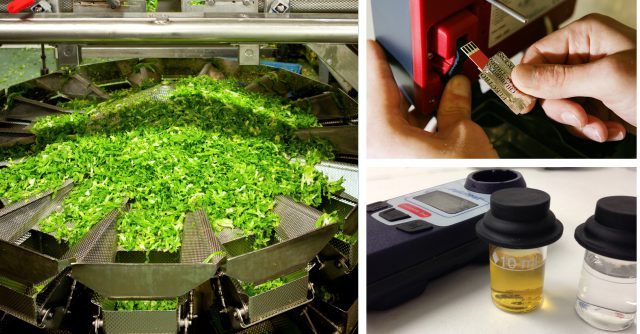When processing fresh-cut produce like lettuce, disinfection is often carried out by adding free chlorine, in the form of hypochlorite, to the wash water.
Many standards stipulate that free chlorine must be maintained in the wash water at concentrations greater than 50 mg/l.
This process, known as superchlorination, aims to avoid the formation of chloramines (also known as combined chlorine), which are formed when free chlorine reacts with nitrogenous compounds in the water, such as ammonia.
Chloramines are weaker disinfectants than free chlorine.
While there is no one perfect method to specifically measure free chlorine at superchlorination levels, Palintest offers options for users aiming for superchlorination.
These include the ChloroSense method, the Iodometric Colorimetric method and the DPD Colorimetric method.
Methods
ChloroSense uses an electrochemical technique called chronoamperometry, an instrument and a disposable pre-calibrated sensor, allowing non-technical users to rapidly obtain accurate results.
Although the device provides free chlorine reading (up to 10 mg/l), operators can use the total chlorine reading (up to 100 mg/l) to demonstrate superchlorination has been achieved.
The unit is glass- and reagent-free and ensures traceability with integrated data logging, making it ideal for use in high-care and good manufacturing practice environments.
Meanwhile, the Chlorometer Duo is a colorimetric version of a standard method allowing total chlorine readings up to 250 mg/l – again demonstrating superchlorination has been achieved.
The DPD Colorimetric method is also available on Palintest’s Chlorometer Duo and has been the standard method for determining free and total chlorine in water for more than 50 years.
However, it has a limited test range (0 – 5 mg/l), requiring dilution on the production line is required.
In most applications where water is expected to be maintained at superchlorination levels, the ChloroSense or the Chlorometer Duo are proven and straightforward approaches to demonstrating effective disinfection is taking place.










